Image

Image

Whether considered an act of extravagant artistic license or remarkable institutional latitude, it is little surprise that Raid the Icebox 1 with Andy Warhol has become one of the most frequently examined contemporary art exhibitions in art criticism and historical scholarship since its presentation 50 years ago.
It comprised seemingly arbitrary yet undoubtedly calculated selections of collection objects as they appeared in storage from Providence’s RISD Museum (then known as the Museum of Art, Rhode Island School of Design). These readymade “tableaux” were then relocated to the exhibition galleries.
Raid the Icebox is now widely recognized as the first instance of an artist-curated display of works from a museum’s collection in the modern era. The exhibition was presented in three venues—the Institute for the Arts, Rice University, Houston; the Isaac Delgado Museum of Art, New Orleans; and, finally, the RISD Museum between October 1969 to June 1970. In the subsequent half-century, countless similar invitations have been extended to artists by museums and other cultural institutions, with the resulting exhibitions making the artist-curated collection show a fixture in museums internationally.
Previous critical examinations of Raid the Icebox have typically addressed the principal elements of the exhibition with varying degrees of historical accuracy and consistency while also endeavoring to position the show from a range of rhetorical or critical stances. It has alternately been understood as a Warhol gesamskunstwerk, a subtle exercise in class warfare, a coded evocation of the artist’s complicated sexuality, or an effort by the museum to (directly or indirectly) generate much-needed revenue.1 The variety of interpretations not only reflects the shifting political dynamics of art-academic discourse, but also Raid’s prescient anticipation of changing values and priorities in contemporary art and museological methodologies. This text aims to present the most accurate history of (and historical context for the exhibition) possible to date, and to contemplate its immediate aftermath and effect as well as its status and legacy into the present.
It is ironic yet telling that the phrasing of the show’s title, Raid the Icebox 1 with Andy Warhol (emphasis mine), suggests the artist’s role as being more of a participant than the generative force behind it. (Although, as we shall see, his idiomatic approach to its concept and assemblage ensured that the resulting presentation could not have been achieved by anyone but Andy Warhol.) The fact of its existence is based on the confluence of a select group of individuals: the director of the RISD Museum, Danny Robbins; the Houston-based art collectors and philanthropists John and Dominique de Menil; Warhol’s business manager, Fred Hughes; and, of course, Warhol himself. Robbins arrived at RISD in 1965 at the remarkably precocious age of thirty-three, having previously served as assistant curator at the Guggenheim Museum. His appointment represented a dynamic shift towards contemporary art for the otherwise more traditionally oriented institution.
Prior to Robbins’s arrival, the museum largely “reflected the tastes of John Maxon (director, 1952–59) [a specialist in sixteenth-century Venetian painting] and Anthony Clark, a scholar of seventeenth- and eighteenth-century Roman art.”2 In short order Robbins developed initiatives such as the Nancy Sayles Day Collection of Modern and Contemporary Latin American Art and the Albert Pilavin Collection of Twentieth Century American Art—encouraging support for new art from individuals previously uninvolved with such pursuits. Robbins’s scholarly expertise in Cubism and this ambitious and industrious cultivation of supporters for both his vision of the RISD Museum and arguably his longer-term career goals motivated his bringing Look Back: An Exhibition of Cubist Paintings and Sculptures from the Menil Family Collection to Providence in 1968. Keen to avail himself of an opportunity to create a more direct and sustainable relationship with the de Menils, he invited them to a Valentine’s Day 1969 closing event of their exhibition, which they fatefully accepted.
John and Dominique de Menil had, by the mid-1960s, firmly established themselves as not only deeply informed and active collectors of modern and contemporary art and objects from other eras and cultures but also as worldly and enlightened philanthropists. They were precisely the kind of advocates that Robbins would have cherished in his attempt to inspire the otherwise more conservative RISD Museum towards more daring and au courant heights.3 The de Menils had known Warhol’s business manager Fred Hughes since he was an art history student of Jermayne MacAgy in the 1960s at Houston’s University of St. Thomas, and that longstanding relationship encouraged increasingly familiar terms with—and the acquisition of works by—the acclaimed and somewhat notorious Pop artist.
Image
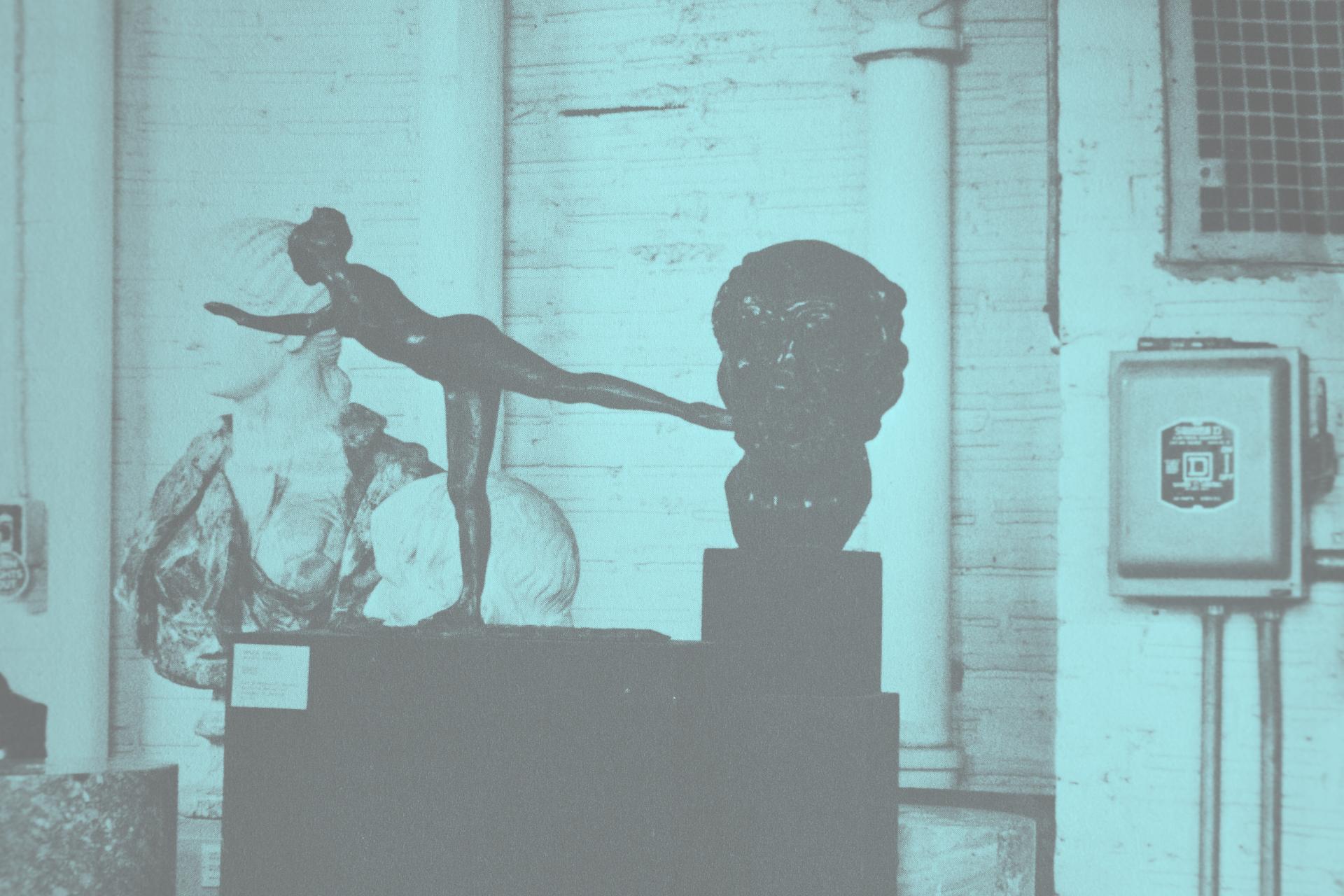
By 1969, Warhol had become both an art-world and pop-culture phenomenon. His concern for public exposure and the cultivation of an “underground” scene around him, as characterized by the scene of social outcasts that constellated at his New York studio, dubbed the Factory, took a dark turn when he was shot in 1968 by the psychologically disturbed radical-feminist Valerie Solanas. The combination of the de Menils’ cosmopolitanism, Hughes’s shrewd business management, and RISD’s relative isolation made Raid the Icebox perhaps a more palatable opportunity for the artist than it might otherwise have been at other moments in his life and career.
When the de Menils visited the RISD Museum in 1969, Robbins toured them through, as he described in his essay for the Raid catalogue, the institution’s “appalling, stuffed storage,”4 all the while lamenting that numerous extraordinary works were withheld from public view due to limited exhibition space and curatorial preferences. John de Menil later corresponded with Robbins, asking him:
What would happen if some important contemporary artist were to choose an exhibition from our reserves? If the only organizing principle would be whether or not he liked whatever he saw? Would the result be different from having a storage show chosen by a curator? Or by anyone? If the artist who selected the materials were strong enough, would he impose his personality on the objects? If he were famous enough, would it not oblige the curious to look? Might his attitude not do violence to the true nature of the objects?5
This challenge of sorts set both Robbins and the de Menils to work, with the latter reaching out to secure Warhol’s participation; he purportedly immediately accepted.6 Warhol made six visits to Providence during the summer of 1969 to examine the collection with Robbins and, on at least one visit, Dominique de Menil. His selection process is memorably chronicled by Robbins and critic David Bourdon in their catalogue texts, with Warhol famously and notably ignoring individual works of art and preferring larger aggregations of objects. Warhol’s demeanor throughout the process is suggested in Bourdon’s observation that “Warhol wanted the entire shoe collection. Did he mean the cabinet as well? ‘Oh, yes, just like that.’”7 Predictably, the curators’ responses were less than enthusiastic. Regarding the presentation of the shoe collection in its entirety, curator Eleanor Fayerweather sternly advised Warhol: “You don’t want it all . . . because there’s some duplication.”8 He selected a table of loaded with eighteenth- and nineteenth-century hat boxes, stacks of paintings and the sandbags propping them up, a chest crammed with American Indian blankets, Windsor chairs in a row on a shelf, and sliding metal racks of paintings hung in no particular art-historical order. All the while Robbins recommended period costumes or leadingly rummaged through drawers of Coptic textiles, Turkish embroideries, and antique chasubles. Warhol was unmoved. Only one contemporary work was selected and it was not Warhol’s own 1964 Race Riot, acquired for the museum by Robbins the year before, but rather Eduardo MacEntyre’s En Violeta (1966), and presumably only because it happened to be hanging on one of the metal racks.
After the selection of objects—variously numbering, according to the citation, nearly 300 to 404—work began on the catalogue for the exhibition. Designed by Providence-based graphic designer Malcolm Grear, the book features Warhol’s distinctive Polaroid images of the museum’s storage; texts by Dominique de Menil, Robbins, and Bourdon; and a notoriously exhaustive cataloguing of every object by the museum’s chief curator and eventual director, Stephen Ostrow.9 Work began on securing the Isaac Delgado Museum (now the New Orleans Museum of Art) as the second venue, and also on the first presentation of the exhibition, which was, tellingly, not to be held at the RISD Museum, but rather at the de Menil–underwritten Institute for the Arts, Rice University, Houston, affectionately referred to as the Art Barn, given its industrial construction in corrugated galvanized sheet metal. It is unclear as to whether the hosting of the first presentation of the show in Houston was agreed upon from the outset or inherently understood, but it is one of the more curiously overlooked circumstances of the exhibition in critical and historical texts devoted to it, suggesting, perhaps, a significant degree of unwitting and unintentional “ownership” in intellectual and fiduciary terms that the de Menils may have wished to assert over the project.10
The installation of the exhibition in Houston was overseen by Dominique de Menil and Fred Hughes, with the former adding the large Warhol silkscreen Flowers (1964) from the de Menils’ collection at the entrance to the Art Barn. As he did in New Orleans and to a lesser degree Providence, Warhol attended the opening in Houston, joined by Hughes, Jane Forth, Jed Johnson, and Henry Geldzahler, the curator at the Metropolitan Museum of Art, New York—an early indication of the changing entourage that would accompany the artist to the other two venues.11 All these presentations more or less maintained Warhol’s spirit of presenting the various sections of storage as they were, though in Houston a small alcove was especially constructed to house the selection of chairs. The same chairs lined the balcony space of the Delgado’s central atrium in a more formal manner than in Houston and certainly in Providence, where they occupied the wall as well as the floor. Regardless of the venue, as Anthony Huberman insightfully observes, Raid was “arranged by a storyteller with no story, a tastemaker with no taste, [with] the museum laid bare and viewers left only with the rawness of the container itself. On view in Raid the Icebox were rarely seen treasures, but with the baby came the bathwater: storage equipment, sloppy maintenance protocols, dubious purchases, spare parts, leftovers—undigested, unadorned, and fully undressed—just like that.”12
Image
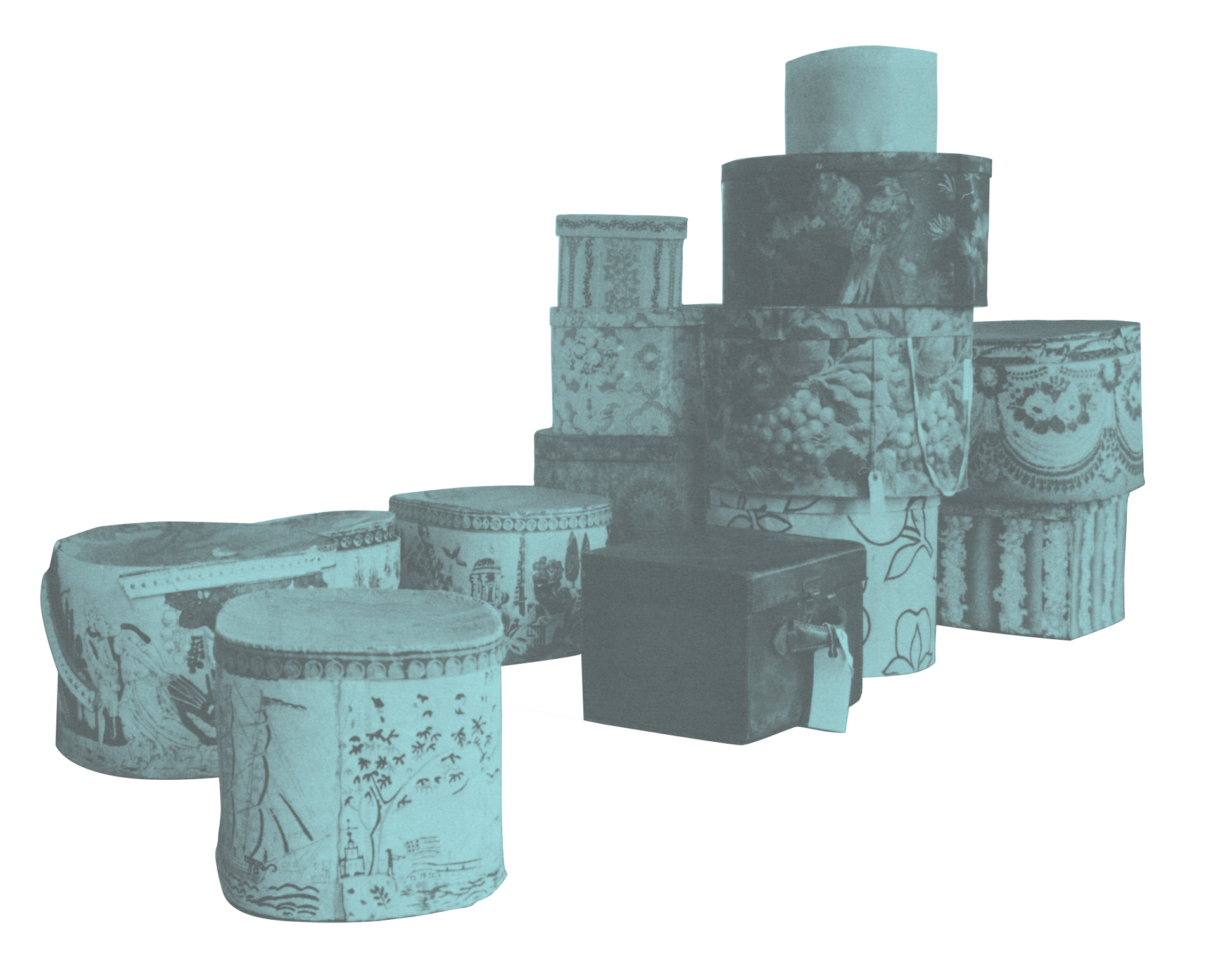
Image
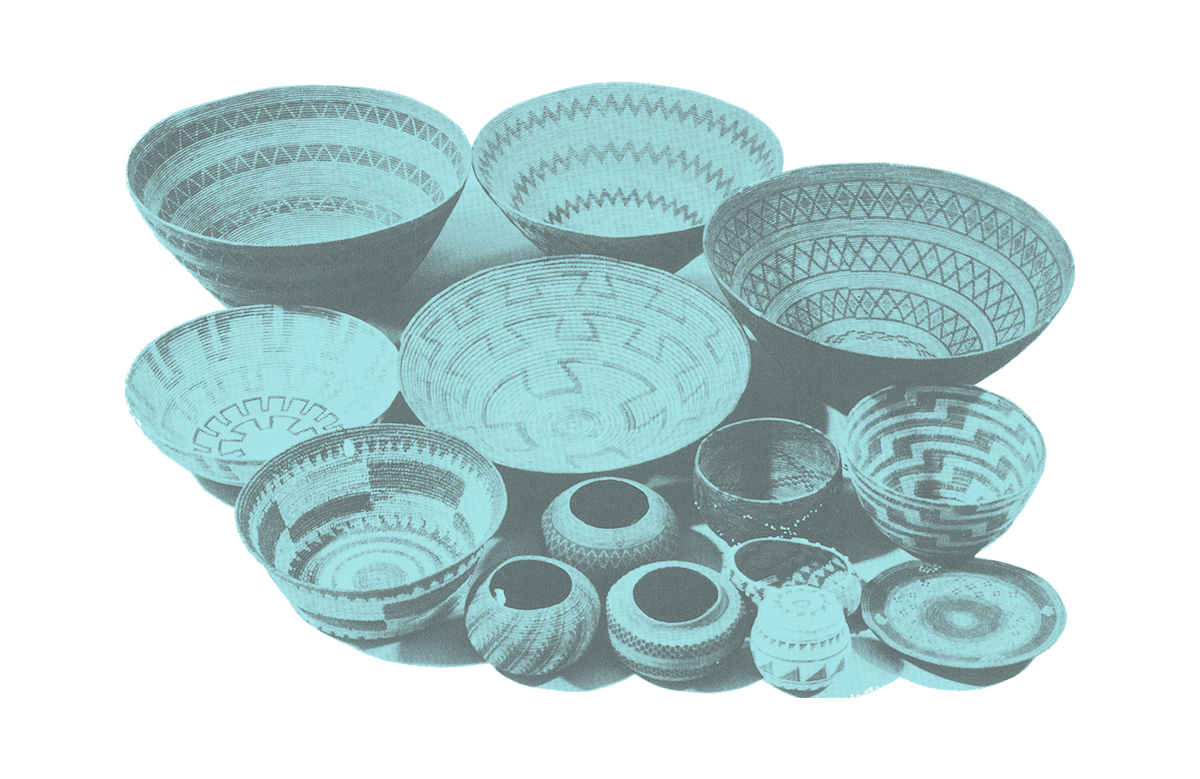
Image
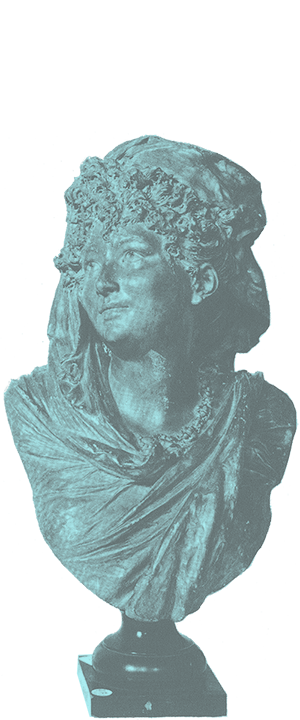
Image

Beyond being the source of the material presented, the RISD Museum was notable for its presentation, with distinctive “cellar-like” single-fixture lighting and walls lined in places with black contact paper to replicate storage areas in the basement of the institution. The RISD Museum opening was also distinguished not by the local glitterati or festive atmosphere found at the other venues’ openings, but for student protests that charged and arguably disrupted the event, making that reception easily the most contentious and least welcoming of the three. The protests were an extension of ongoing disputes between the students and the school over the lack of funding for underprivileged students, with the museum becoming a particular focal point given the perception that it absorbed much of RISD’s financial resources and possessed an at best ambivalent relationship to both the student body and the faculty. Students distributing flyers articulating their demands and carrying signs stating “People over Porcelain” joined museum patrons at the otherwise well-attended event, though the de Menils and eventually Warhol, having performed his duty of providing a maddeningly and typically detached interface with the press, were conspicuously absent.
In 1971, in the immediate aftermath of the exhibition, Robbins moved on to direct Harvard’s Fogg Museum, with Ostrow, as previously mentioned, becoming director of the RISD Museum in his stead. Raid the Icebox significantly featured the number “1” in its title, presuming from its inception that further artist-curated raids would be forthcoming. Despite Robbins’s efforts while at RISD, such ventures either at the museum or at other institutions would not ultimately be realized. Ostrow, whose expertise lay in early art-historical epochs, was disinclined to extend the series under his directorial tenure. The de Menils maintained a gradually declining involvement with the museum, with John sparingly attending board meetings until his death in 1973 and Dominique focusing more intensively on what would become the Menil Collection. While Raid the Icebox was consigned to footnote status within Warhol’s oeuvre/biography throughout the 1970s, its significance would be profoundly reconsidered beginning in the mid-1980s with the steady increase in artist-curated exhibitions of museums’ collections and the growing entrenchment of institutional critique in art practice and theory.
The aforementioned 103-page publication complementing the show has, along with Robert O. Thornton’s now iconic images of the RISD Museum’s installation, taken on a great deal of responsibility for the critical reception of the exhibition into the present day. This is characteristic of any historically significant exhibition, however one could argue that the radical manner in which these kinds of museum objects were represented makes their visual documentary legacy that much more significant. Given the rather deferred nature of Raid the Icebox’s critical reception—with the exhibition’s most significant later interpreters not having seen it when it was on view – the book and the installation images have become perhaps AS important as the show itself. In John Brooks’ Artforum review of a subsequent Warhol-curated effort, “Folk and Funk,” featuring his American folk art collection at the Museum of American Folk Art in 1977 he alludes to “Raid,” remarking that “I didn’t see that show but judging by its catalogue, the most striking thing …”13 suggesting that even early on the show was best known through intermediary images and texts. While typically not included in the “master-critical-narrative” about his work and practice it has merited inclusion on timelines and bios – as early as the “Catalogue Raisonne of Warhol’s Gestures” in a 1971 Art in America and continuing with the timeline for the 1989 MoMA retrospective.
Image

While Raid the Icebox was consigned to footnote status within Warhol’s oeuvre/biography throughout the 1970s, its significance would be profoundly reconsidered with the steady increase in artist-curated exhibitions of museums’ collections and the growing entrenchment of institutional critique in art practice and theory beginning in the mid-1980s.
Polaroids of RISD Museum storage by Andy Warhol, 1969.
Image
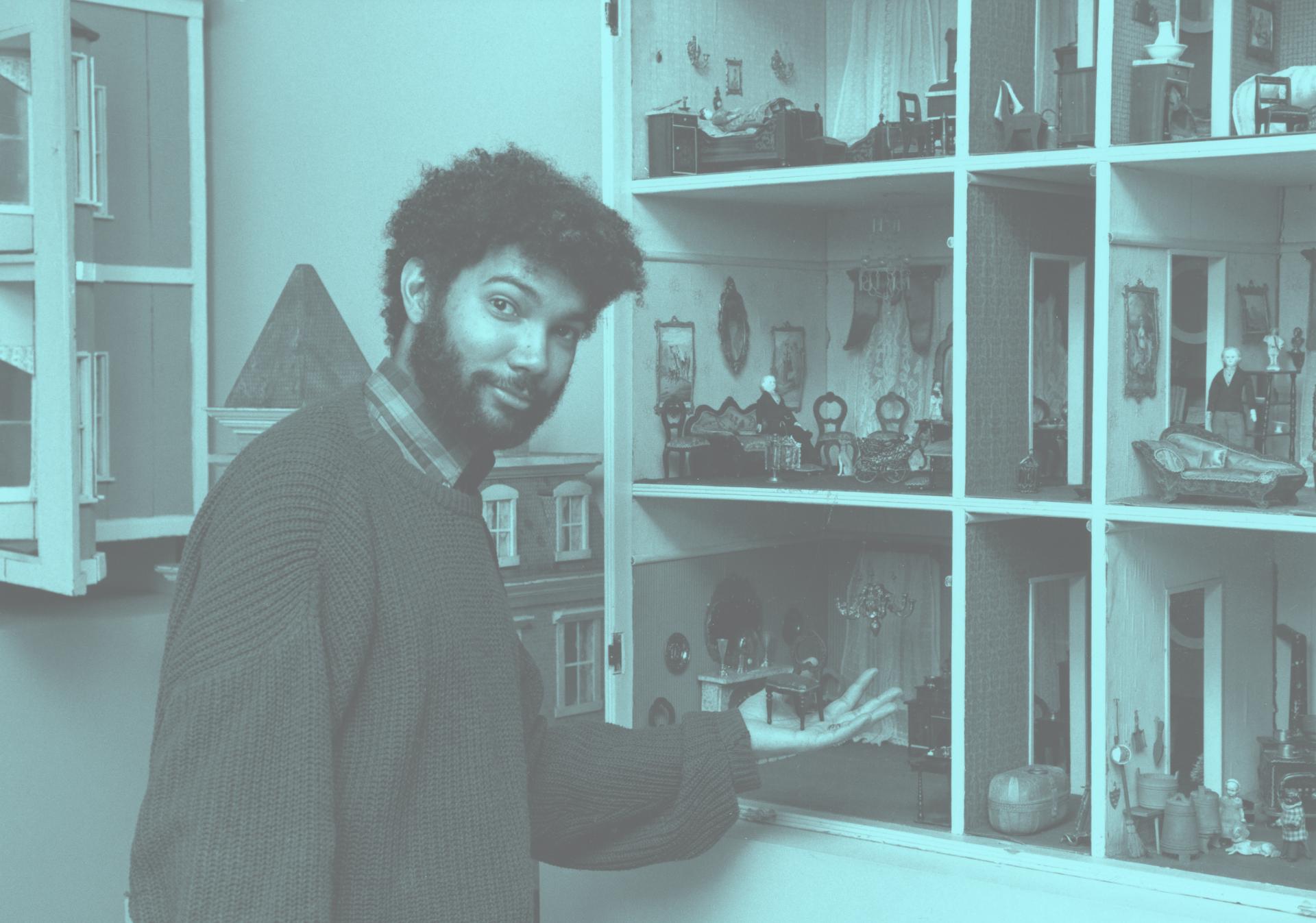
Fred Wilson with Dollhouse, Mining the Museum, ca 1992. Courtesy of the Maryland Historical Society.
Critical interpretations of the show and its legacy of similar “Raids” since 1970 have appeared steadily since the early 1990s. Peter Wollen named his book of essays on subcultures Raiding the Icebox, with an essay appreciating Warhol’s larger contribution to underground culture and sensibilities situating the show as fundamental to that understanding. Lisa Corrin’s essay for the RISD Museum’s Museum Notes on the occasion of Danny Robbins’s passing in 1995 considers the exhibition less in terms of Warhol’s individual, artistic subversion of institutional standards, but as the visionary result of the museum director’s assembling of artist-curator, objects, and space. (While this was perhaps not the hippest and most fashionable take, there IS something to be said for what is now an almost inconceivable latitude and support afforded to Warhol by Robbins—though, again, it raises questions, probably unanswerable in her text given the context, as to whether Robbins could or would have dared placed limits on the de Menil–backed artist.) Deborah Bright’s 2001 essay for the scholarly journal Art History on the exhibition, “Shopping the Leftovers: Warhol’s Collecting Strategies in Raid the Icebox 1,” considers the exhibition in relation to the consumptive nature of his personal collecting habits—particular the rejection of an expected “connoisseurial” approach—while also noting how his “demand that a buttoned-down chief curator undertake the tedious clerk’s labor of valorizing and authenticating unremarkable objects of mass consumption and rejects dredged from the museum’s oubliette” for the catalogue “must have produced its own perverse gratification.”14 This thematic of the “class revenge” dynamic in Warhol’s selection process and organizational strategy is fine-tuned and intensified by Anthony Huberman in his 2015 text for Mousse magazine’s The Artist As Curator series, particularly in his statement distancing the show from later institutional critique manifestations of artist-curated projects: “His beef was not with the those who make the payments but with those who make the judgements.”15 His text importantly acknowledges the de Menils’ key conceptual role in the project and, like Corrin before him, positions the show as a gesamskunstwerk of sorts—a Warhol work on a museum-exhibition scale. Thomas Morgan Evans, in his recent book on Warhol and sculpture, discusses Raid in terms of the artist’s ongoing emphasis on recycling, reuse, and rehabilitation. He also confronts notions that overemphasize the artist’s development of the project into one big Warhol, instead discussing it in terms of “providing an alternative to precisely the structures of value that constrict the aesthetic possibilities of our encounters with objects.”16
The critical reception of the show developed, perhaps, in the wake of the most prominent Raid successors, which begin to appear in the mid-1980s with the introduction of sustained programs such as the Artist’s Choice series at the Museum of Modern Art, New York, beginning with Scott Burton’s 1989 pairing of works by Brancusi with his own, or with exclusive, thematic presentations such as Joseph Kosuth’s The Play of the Unmentionable in 1990 at the Brooklyn Museum. Perhaps the most important shift in attitude and approach since Raid is the self-consciousness around the relationship between artist and museum. While one could consider Warhol’s exhibition as having effectively broken the ice by introducing the practice of inviting an artist to assemble a show from a museum’s collection, works that emerged in the interim by artists such as Michael Asher, Chris Burden, Hans Haacke, and Louise Lawler, among others, focused attention upon the museum as an institution with various forms of power and authority informing its contextualization and interpretation of historical objects. With important exceptions such as John Cage’s Rolywholyover: A Circus at the Museum of Contemporary Art, Los Angeles, in 1993, the more prominent of the artist-and-museum interventions presented a balance between idiomatic expression and the development of a particular idea, using the institution’s resources in a pointed and often didactic manner. Provided the opportunity to engage with a museum’s collection, artists have increasingly elected either to indict the power structures and methodologies that constrain and define our understanding of what is culturally and historically significant or to harness the museum’s power—and the artist’s power within it—to critically recalibrate the art-historical canon, developing or contextualizing individual practice and idiom through the presentation of historical objects and the works of others.
Fred Wilson’s Mining the Museum (1992–93) at the Maryland Historical Society joins Kosuth’s now lesser-known Play of the Unmentionable in representing the tendency towards a transformative use of museum objects to provide incisive social and cultural commentary that a museum staff—from the director to junior curators—might have neither the authority nor the temerity to pursue. Kosuth’s project was actually part of a larger Grand Lobby series at the Brooklyn Museum of artist projects without standard limitations. Having initially been invited to present a series of neon text sculptures, he, with curator Charlotta Kotik, pivoted the project toward a selection from the museum’s historically comprehensive collection to consider how art has been censored by different cultures throughout the ages. A deliberate and provocative response to controversies raging in the United States around federal funding for politically and socially transgressive artists and exhibitions, the exhibition was hung salon-style; divided into multiple categories such as the female and male nude, the child nude, and religious and political proscriptions, among others; and accompanied by quoted and original texts that underscored and clarified the theme of the show.
Mining the Museum was presented not at an art museum but at a historical society. Wilson applied a year of intensive research of the Maryland Historical Society’s art, artifacts, and archives to a selection and placement of objects that addressed legacies of the African American experience—particularly slavery and racist oppression—hitherto downplayed or patently ignored by the museum’s curatorial approach. Techniques and strategies of museological display such as dramatic lighting, painted walls, and didactic texts were engaged to call attention to the new objects and the radically different relationships and interpretations Wilson put into play while remaining consistent with standard museum practice.
Contrary to Warhol’s more detached “Warholian” approach, Kosuth and Wilson established a template for artist-curated exhibitions of museum holdings that engage broader sociopolitical and specifically art-institutional or cultural-institutional critiques. Furthermore, their projects were very much framed within and therefore extensions of their own artistic practice—conceptually, stylistically, materially—whereas Raid certainly reflected Warhol’s practice while remaining somewhat separate from it.
Burton’s Artist’s Choice project for MoMA and the more recent exhibition for the Menil Collection curated by Robert Gober, Robert Gober: The Meat Wagon (2005), provide key examples of museum-collection curatorial projects by artists that addressed a sense of aesthetic legacy through an institutional intervention. Burton’s selection and presentation of works by the Modern master Constantin Brancusi drew attention not only to the profound impact on his own reductively expressive use of stone but also highlighted the importance of the base as a critical element in his predecessor’s practice. As Burton states in the press release for the show, he wanted “to demonstrate ‘that Brancusi radically rejected the distinction between the sculptures and his other created objects,’ such as seats, tables, chairs, bases, and architectural elements.”17 The project thus became a subtle bit of art-critical revisionist history made manifest in the objects themselves.
Gober’s Meat Wagon was, from the outset, conceived by curator Matthew Drutt as “an exhibition integrating [Gober’s] work with the holdings of The Menil Collection” given “correspondences between his art and the history of the Menil [that were] more than just occasional or superficial [with] an abundance of common interests in religion, race, politics, marginalized cultures, and the frequently overlooked significance of everyday objects.”18 This was not the first such project of its kind at the Menil—others that preceded it included interventions featuring Anna Gaskell (2002–3), Luisa Lambri (2004), and Vik Muniz (2002). Yet, given the artist’s place within art history, the celebrated reception of the exhibition itself, and especially the fact that curatorial practice has now become a key component within Gober’s artistic life and career, it has become profoundly significant in demonstrating an ideal condition wherein the artist-curated museum-collection show inspires a new direction in an artist’s methodology. The exhibition featured examples of Gober’s sculpture framed within, or themselves framing, numerous objects selected from across the Menil Collection’s holdings, from an eighteenth-century-BCE Egyptian funerary mask to an oil-on-wood panel of Two Beggars by François Xavier Vispre (1746) shown behind broken glass to, appropriately enough, Warhol’s hand-painted Ice Box from 1961. As with Burton and his project, Gober was simultaneously given an opportunity to provide a rich historical context for the understanding of his own work as well as a chance to actively engage with objects of great personal importance to the artist and that few others have access to. Gober has since curated exhibitions of Charles Burchfield’s work at the Hammer Museum in Los Angeles (2009) and a selection of Forrest Bess works in the 2012 Whitney Biennial. He also included figures such as Robert Beck, Joan Semmel, and Nancy Shaver in his 2014 MoMA retrospective, building on his Meat Wagon experience to exhibit artists whose legacies have not been considered priorities by established institutional curators.
Video file
Other recent projects have taken a more performative turn with regard to artist engagement with objects from museum collections. In The Mother: An Unsavoury Play in Two Acts and an Epilogue, her 2015 performance at the Tate Modern, Polish artist Paulina Olowska featured works by Meredith Frampton, Dora Carrington, and Henri Matisse that functioned in part as props for the staging of an adaptation of avant-garde playwright Stanisław Ignacy Witkiewicz’s play from 1924. Olowska’s very deliberate selection of these particular artists’ objects allowed them to transcend from mere scenery and to meaningfully develop both the experience of the performance and the artist’s larger project of addressing modernism’s importance to our present moment and of recognizing the overlooked women artists of that era.
Danish collaborative duo Elmgreen and Dragset’s 2013–14 project Tomorrow, created for another London-based institution, the Victoria and Albert Museum, also made theatrical use of a museum collection, albeit in a very different manner. Where Olowska’s intervention was framed within a more conventional understanding of a staged performance, Tomorrow fell somewhere in between installation and participatory theater, with the works of art providing coded clues to the identities of the fictional characters Elmgreen and Dragset had conceived to occupy the domestic space / film set they had designed. Both projects underscore the sense of Raid’s “theatricality” in efforts made by Warhol, Hughes, Robbins, and the de Menils to replicate the feel and experience of museum storage in gallery spaces while extending the performative tendencies of the artist-curated collection project found in John Cage’s aforementioned Rolywholyover exhibition, which turned objects from various museums into both “actors” and “props” by repeatedly resituating and relocating them as a conceptual condition of the show.
The motivations for museums to invite artists to “raid an icebox” are characterized by as wide a variety of factors and considerations as those informing artists’ decisions to accept said invitations. In some instances, the impulse is similar to that which prompted the de Menils and Robbins to develop Raid—the perceived need for an antidote to the curatorial entropy endemic to academically trained professionals resolved to maintain a particular canon and an entrenched art-historical narrative.
In other situations, projects grow more organically from an interest in inviting an artist to create a project at the museum. This then can become a curated exhibition (e.g., Kosuth and the Brooklyn Museum) or an invitation for the artist to curate a specific presentation as related to their work (Gober), another artist’s work (as in Glenn Ligon’s 2017 Blue Black exhibition at the Pulitzer Arts Foundation, which was inspired by an Ellsworth Kelly painting that dominates the space), or their examination of a particular theme or issue (Wilson’s Mining the Museum). Museums have also begun to regularly invite artists to develop presentations of collection works as complements to their own solo exhibitions, an approach that has ranged from discrete and unconventional projects such as Liam Gillick’s The One Hundred and Sixty Third Floor (2009) at the Museum of Contemporary Art (Chicago) or Spencer Finch’s Painting Air (2012) at the RISD Museum to more conventional exhibitions, such as the works from the Metropolitan Museum of Art’s collection that accompanied Kerry James Marshall’s survey exhibition Mastry (2016–17.)
Image
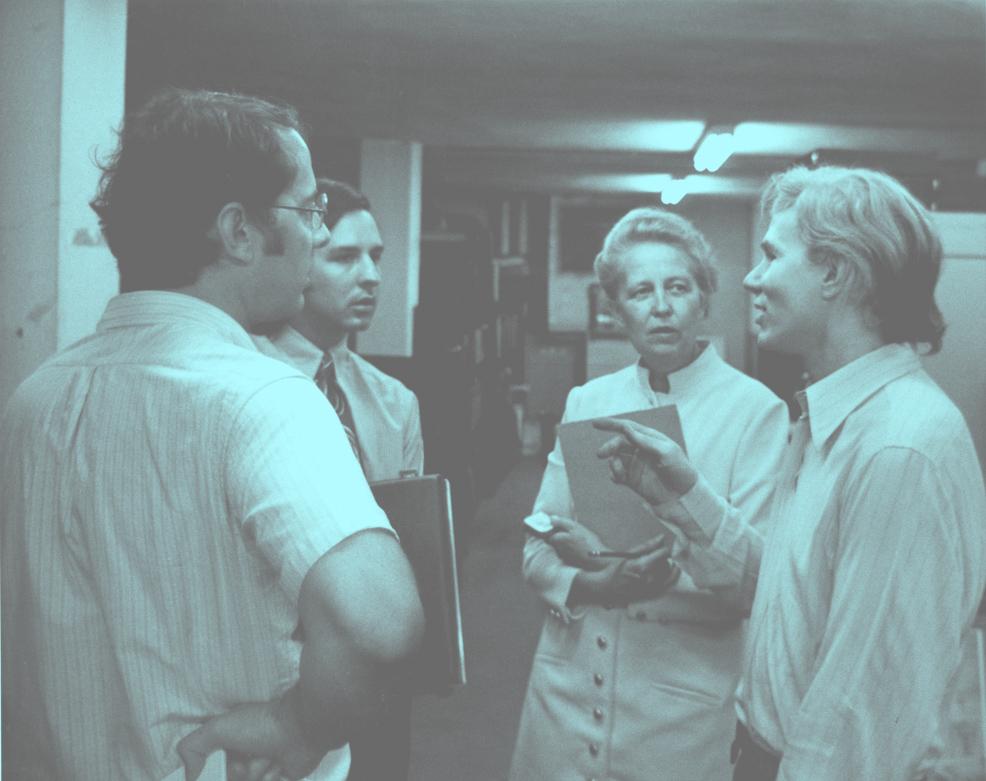
Left to right: David Bourdon, Fred Hughes, Dominique de Menil, and Andy Warhol, RISD Museum storage area, 1969. Courtesy of RISD Archives.
Given the level of commitment they represent, the most significant artist-led curatorial projects have been long-term or indefinite arrangements of the collection within a museum. At the MAK (the Austrian Museum of Applied Arts / Contemporary Art) in Vienna, for example, various rooms dedicated to a particular period style have been installed by artists such as Barbara Bloom (“Historicism Art Nouveau”), Jenny Holzer (“Empire Style Biedermeier”), and Donald Judd (“Baroque Rococo Classicism”), remaining that way since the late 1980s or early 1990s. Also notable in this regard is Jorge Pardo’s design to house the pre-Columbian collection at the Los Angeles County Museum of Art, which opened in 2008. While not technically a curated presentation of a collection along the lines of Raid and the other exhibitions alluded to previously, the curatorial decision to present this particular collection within a framework that, given Pardo’s intensive blurring of boundaries between art, architecture, and design, seems tantamount to situating these historical objects within what is effectively a large-scale Jorge Pardo installation. As such, it, like the MAK presentations, suggests the degree to which Raid’s initiation of artist-interventions in the museum context has taken root in museology at large.
Raid the Icebox 1’s legacy has been further enhanced by recent exhibitions such as The Museum As Muse: Artists Reflect at the Museum of Modern Art, New York (1999); The Keeper at the New Museum of Contemporary Art, New York (2016); and The Artist’s Museum at the Institute of Contemporary Art, Boston (2016–17)—all of which cite it as pivotal to understanding how living artists perceive and potentially work with, and against, the institution of the museum. Indeed, the enduring appeal of inviting artists to work with a museum’s holdings has possibly gained even greater strength as new generations become more invested in the notion of authenticity as counter to the mediated nature of experience and in the opportunity to retell history from a perspective besides that of the one in power. Raid and the artist-curated shows that it preceded and inspired collectively test the thresholds of agency negotiated between the artist, the viewer, and the museum, which continues to represent consolidated social, economic, and political agency regardless of its now typically progressive intentions.
Ultimately, Raid the Icebox 1 with Andy Warhol’s most lasting and significant contribution to art history and museum work may be its radicalization of curatorial decision-making within the museum. It has compelled curators to take greater risks and consider more unconventional and expansive methods or strategies to problematize the ways that cultural institutions reinforce the inequities and injustices that have defined humanity for millennia.
- The interpretations of Raid the Icebox referred to here include Lisa Graziose Corrin’s article “The Legacy of Daniel Robbins’ Raid the Icebox 1” for a 1996 issue of the RISD Museum’s Museum Notes, published on the occasion of Danny Robbins’s passing in 1995 and which, unsurprisingly, emphasizes the former RISD Museum director’s role in the exhibition and suggests the exhibition was a large-scale “work” by Warhol. Anthony Huberman’s “Andy Warhol, Raid the Icebox 1, with Andy Warhol, 1969” (2015) for Mousse magazine’s The Artist As Curator series and Deborah Bright’s “Shopping the Leftovers: Warhol’s Collecting strategies in Raid the Icebox 1” (2001) in the scholarly journal Art History both advance the notion of Raid as demonstrating Warhol’s latent interest in undermining the conventions of social class. “Warhol’s Closet” by Michael Lobel, published in Art Journal in 1996 (vol. 55, no. 4, pp. 42–50) examines the artist’s collecting proclivities—and Raid as a related phenomenon—as emblematic of his extreme discretion with regard to his sexuality. Natalie Musteata’s “Defrosting the Icebox: A Contextual Analysis of Andy Warhol’s Raid the Icebox 1” (2016) for the Journal of Curatorial Studies considers the exhibition as inspired by financial necessity and desire for greater contemporary art relevancy (though strangely understates the de Menils’ involvement in this regard).
- Thomas S. Michie, “A History of the Collection,” in Selected Works (Providence: Museum of Art, Rhode Island School of Design), 18.
- It is important to consider that “RISD” as a known quantity in the art world—not to mention part of a larger cultural consciousness—was not in 1969 what it is today, thanks to a range of alumni including Dale Chihuly, the Talking Heads, Nicole Eisenman, Arlene Shechet, Kara Walker, and the many others who have burnished its reputation since the 1970s.
- Danny Robbins, “Confessions of a Museum Director,” in Raid the Icebox 1 with Andy Warhol (Providence: Museum of Art, Rhode Island School of Design, 1969), 8.
- Ibid., 14. John de Menil’s use of the possessive pronoun “our” is telling here. Is he conjecturing what might happen if an artist were to engage with his and Dominique’s personal collection—prophetically anticipating Houston’s Menil Colllection museum by decades—or is it a suggestion of solidarity with Robbins and the RISD Museum—the museum’s collection that we (the de Menils) and you (Danny Robbins) share a commitment to? If the latter, it suggests the potential Robbins might have expected for the de Menils to become more actively involved in the RISD Museum’s future.
- The invitation was “immediately accepted,” according to William Middleton in his biography of the de Menils, Double Vision: The Unerring Eye of Art World Avatars Dominique and John de Menil (New York: Alfred A. Knopf, 2018), 468, but whether it was enthusiastically done is questionable, as per Deborah Bright’s suggestion (citing Victor Bokris’s The Life and Death of Andy Warhol, 1989) that “Warhol was ambivalent about the project from the start, but his business manager Fred Hughes . . . was eager to exploit his close connections to the Menils to feather his own and Andy’s nests.” See Bright, “Shopping the Leftovers: Warhol’s Collecting Strategies in Raid the Icebox 1,” Art History 24, no. 2 (April 2001): 282.
- David Bourdon, “Andy’s Dish,” in Raid the Icebox 1 with Andy Warhol (Providence: Museum of Art, Rhode Island School of Design, 1969) 17.
- Ibid., 20.
- Much has been made in the scholarship about Raid the Icebox regarding the deployment of the chief curator to perform this tedious and menial clerical task, yet Ostrow affirms that given the staff size of the museum at that time, it was merely a matter of expediting a very time-sensitive project.
- The de Menils underwrote the exhibition and offered the services of the public-relations firm Withers Swan, providing the RISD Museum with publicity (and, one assumes, attendant visibility) it might not otherwise have been able to afford. They are also credited with devising the project’s title, which was inspired by any number of things—from a 1961 Warhol Ice Box painting from the de Menils’ collection to the frigid temperature of the RISD Museum’s storage to, most likely, the colloquial notion of rummaging through a fridge for a midnight snack.
- While the RISD Museum’s installation is iconically represented by Robert O. Thornton’s photographs of the show, one could argue that the readymade tableaux of objects orchestrated by de Menil and Hughes and selected by Warhol became a template of sorts for other presentations that were arranged, respectively, by director James Byrnes and collections curator Bill Fagaly at the Delgado and Danny Robbins at the RISD Museum.
- Anthony Huberman, “Andy Warhol, Raid the Icebox 1, with Andy Warhol, 1969,” The Artist as Curator–Mousse 48, no. 7: 13.
- John Brooks, “Andy Warhol’s ‘Folk and Funk’,” Artforum 16, no. 4 (December 1977): 48.
- Bright, “Shopping the Leftovers,” 288.
- Huberman, “Andy Warhol, Raid the Icebox 1, with Andy Warhol, 1969,” 18. This seems a little disingenuous, as one could argue that those who make the judgments do so in the fashion they do it to receive said payments.
- Thomas Morgan Evans, 3D Warhol: Andy Warhol and Sculpture (London: I. B. Tauris, 2017), 159.
- Scott Burton, quoted in a press release for Artist’s Choice: Burton on Brancusi, Museum of Modern Art (New York), March 1989
- Matthew Drutt, Robert Gober: The Meat Wagon (Houston: The Menil Collection, 2005), 10.
Cite this article as
Chicago Style
MLA Style
Shareable Link
Copy this page's URL to your clipboard.
This chapter was created under the direction of Dominic Molon and accompanies the exhibition Raid the Icebox Now on view at the RISD Museum September 13, 2019–September 6, 2020. Authored by Dominic Molon. Creative direction by Carolyn Gennari. Design by Brendan Campbell. Additional production support by Carson Evans, Erik Gould, and Jeremy Radtke.
Our understanding of Andy Warhol's project and RISD at that time was made possible through the rich holdings of RISD Archives and the support of Andrew Martinez and Douglas Doe.
